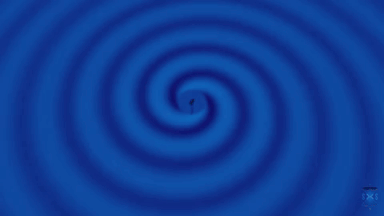LIGO detects gravitational waves for third time
The collision of a pair of colossal, stellar-mass black holes has made itself heard, nearly 3 billion light years away, through a cosmic microphone on Earth. On Jan. 4, the Laser Interferometry Gravitational-wave Observatory (LIGO) picked up a barely perceptible signal that scientists quickly determined to be a gravitational wave — a ripple of energy passing through the curvature of spacetime. The event, published in Physical Review Letters, marks the third direct detection of a gravitational wave.
Catalogued as GW170104, the signal, when translated into the audio band, resembles an upward-sweeping chirp, characteristic of a “binary coalescence,” or a merging of two massive astrophysical objects in the distant universe.
The team has concluded that the gravitational wave was produced by the collision of two heavy, stellar–mass black holes, one estimated to be about 31 times, and the other 19 times, as massive as the sun.
The signal captured by LIGO lasts less than two-tenths of a second, and in that fraction of a moment, scientists calculate that the black holes whirled around each other about six times before merging into one giant, 49-solar-mass black hole. This cosmic collision gave off an enormous amount of energy in the form of gravitational waves, equivalent to two times the mass of the sun.
The merger took place about 3 billion light years from Earth, measuring about twice as far as the black hole collision that produced GW150914, LIGO’s first-ever gravitational wave detection.
“This is indeed the farthest out stellar-mass black hole system anyone has seen,” says Erik Katsavounidis, senior research scientist in MIT’s Kavli Institute for Astrophysics and Space Research and a member of the LIGO team.

A mathematical simulation of the warped space-time near two merging black holes, consistent with LIGO's observation of the event dubbed GW170104. The coloured bands are gravitational-wave peaks and troughs, with the colors getting brighter as the wave amplitude increases. (Image: LIGO/Caltech/MIT/SXS Collaboration)
The new gravitational wave signal is similar to LIGO’s first two detections, both in its source — a binary black hole merger — and the overall mass of that source.
However, the scientists discovered an interesting feature in the newest signal: The spin of at least one of the black holes may have been “antialigned” with the orbital angular momentum — the direction in which the black holes were orbiting each other. This phenomenon would be similar to teacups spinning counterclockwise on a clockwise-rotating carnival platform.
Katsavounidis stresses that the signs for antialignment are small, though potentially significant. If scientists detect more antialigned systems, such evidence may support a formation scenario known as dynamical capture, in which black holes evolve separately in a cosmic environment cluttered with stellar objects. In such an environment, black holes with various spins can eventually pair up in binary systems, simply through gravitational, “dynamic” attraction.
Dynamical capture runs counter to a model called “common envelope evolution,” in which binary black holes evolve together, with spins that are aligned with their orbital angular momentum. In fact, the LIGO team inferred that the December 2015 detection had a strong probability of aligned spins, contrary to this newest signal.
“Here for the first time, we’re seeing antialignment is favored,” Katsavounidis says. “If we can detect more systems, we can nail down under what circumstances black holes formed and evolved to form binary systems that ultimately merged.”





